There’s a very simple reason why Portland’s real estate market is shifting fast: Households whose members regularly get around without cars now account for about three-fifths of Portland’s net growth.
One in four Portland households now includes more adults than cars, according to the most recent Census estimates available, from 2011. (Figures for 2012 will arrive in September.) And though that’s not a massive behavioral change since 2005, when the figure was about one in five, the increase in this sort of household is huge as a share of net population growth.
And it’s that figure, net population growth, that drives the real estate industry.
This trend is so unusual in the United States that it’s no wonder that people who live in other cities often struggle to understand the way Portlanders go about their business and their lives.
For example, here’s the same chart for a city we’re often compared to: Austin, Texas. Austin is a bit larger than Portland (332,000 households compared to 251,000) and faster-growing (14 percent household growth within city limits since 2005, compared to 10 percent). But in Austin, only 13 percent of households lead low-car lifestyles, and such households only account for 13 percent of population growth:
To arrive at our index of the number of “low-car” households in a city, we add up annual Census estimates on the number of households that have either no car, or fewer cars in the household than workers (that’s people aged 16 and up who either have a job or are looking for one). A particularly popular category of low-car household in Portland: two workers, one car.
A few details: Roommates count as living in the same household only if they usually share their food. These statistics are based on weighted surveys taken by the Census every April, so they include modest margins of error, but changes like Portland’s are well outside that range. And despite our terminology in these charts, not every household that owns one car or more for every worker is truly “car-reliant.” But we think this is the best available measure of how Americans in a given city experience transportation.
Here’s the chart for Seattle, which like Portland currently has about 25 percent of its households leading low-car lives. But Seattle’s net growth in low-car households has been far slower than Portland’s:
A few U.S. cities are seeing faster net growth in the low-car population than Portland is. One of them is Boston, where half of households already lead low-car lives:
And here’s the chart for the U.S. population at large. Nationally, 14 percent of households include more adults than autos, and such households account for 28 percent of U.S. population growth:
It’s important to understand, as we think about what these numbers mean, that they don’t measure newcomers to a city. After all, people are constantly moving in and out of a city; about 9 percent of Portlanders arrived here in the last year, and about 7 percent of those who lived here a year ago have left. Also, households regularly increase or decrease their number of cars or workers without moving location.
Here’s what this statistic does show, though: in the last decade, Portland has developed a powerful, sustained and nationally unique demand for homes and jobs that are easily accessible by foot, bike and public transit. For example, 24 percent of two-worker Portland households now own only one car. Among Portlanders who live on their own, 30 percent don’t own a car at all. And among all Portland housing rentals, 27 percent don’t need car parking of any sort, because nobody inside owns one.
I’m not sure anybody has ever added up these numbers before and surveyed the full scale of Portland’s shift in real estate demand. But our local real estate market has been discovering them in its own way all the same. It’s this gradual discovery that our new real estate beat will be covering, almost every Tuesday morning, here on BikePortland. Stay tuned for more.

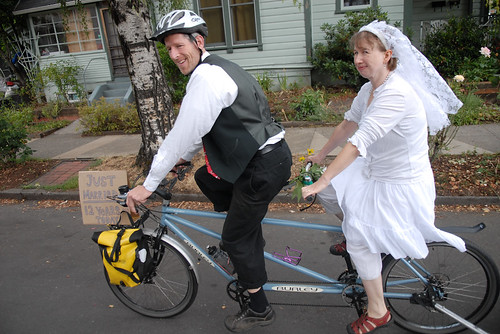

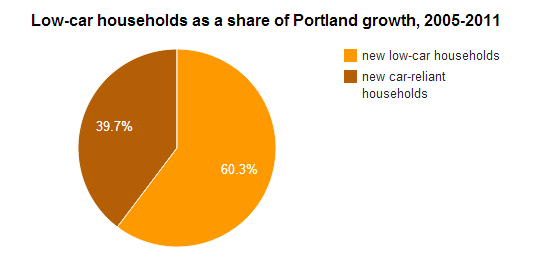
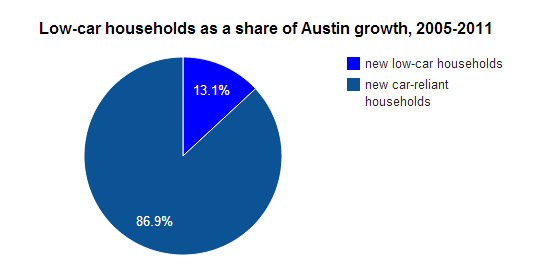
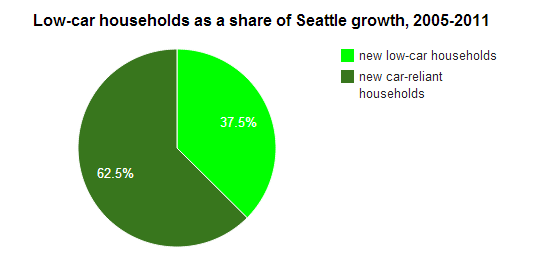
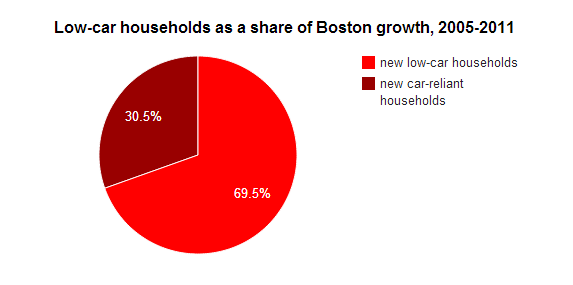


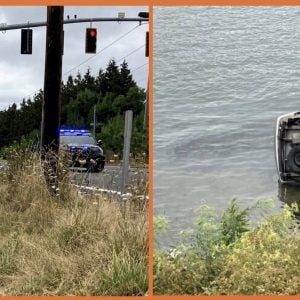

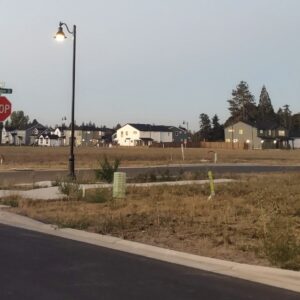
Thanks for reading.
BikePortland has served this community with independent community journalism since 2005. We rely on subscriptions from readers like you to survive. Your financial support is vital in keeping this valuable resource alive and well.
Please subscribe today to strengthen and expand our work.
Thanks so much, Michael, for some really useful analysis of the stats. I haven’t seen a breakdown like this before either, and it adds a powerful element to the argument against mandatory parking minimums in this town.
Regarding the Austin/Portland comparison: while it’s true that Austin’s city population is higher, that’s almost entirely because they’ve drawn their boundaries so far out. The physical size of Austin is nearly twice that of Portland (270 sq mi vs 145), and includes plenty of low-density areas that would be considered suburbs here. If you look at the two cities as complete metropolitan areas, by including Vancouver, Gresham and Beaverton with Portland, and Round Rock and Cedar Park with Austin, Portland turns out to be markedly *larger* — which makes the growth in low-car households even more striking.
And Austin can be hotter than heck in the summertime. Of all the weather that stops people from biking, hot is the one with the least-effective remedies. There’s heavy clothing for the cold, raincoats/pants+fenders for rain, snow brushes off (if your outer layer is insulated enough), but if it’s hot, you can only take off so many clothes, even for the WNBR.
Very insightful article. What do these figures mean vis a vis Portland’s newly modified minimum parking space laws for new construction? How can we show their relative appropriateness?
Nice work, Michael. Hard to overstate the message here. Thanks.
“I’m not sure anybody has ever added up these numbers before and surveyed the full scale of Portland’s shift in real estate demand.’
I’ve been playing with these figures ever since I figured out how to mine the census and ACS datasets online, and mention these statistics in all public venues I can. Everyone has their own screens and questions they’d like to ask of such data, of course, and mine have been to understand the zero-car household prevalence, distribution, and change/growth in that category in Multnomah Co.
Excellent, 9watts! Now that you mention it, of course I’ve seen you throw out some of those stats over the last year. Glad to have a fellow traveler on the case.
Michael (and Jonathan), thank you very much. This article shows serious journalistic work. In addition to the regular digging and interviewing that you do, it looks like you pulled together some new, interesting details from otherwise generally available information to discern important policy-related insights. Wow!
I’m not surprised by Boston. It’s always been a walking city anyways. Anybody who’s ever visited there knows you avoid driving if possible. And mayor Menino has only improved things for bicyclists. Portland Oregon is still unique though, and in a very good way!
The ability to attract people who are interested in a more active lifestyle (with less associated burden on health care costs) and who spend less of their money on transportation (and possibly more on local goods and services) is an enormous competitive advantage for our region. It’s the low-car dividend. (I can’t stand the “green” terminology anymore!) All of our policies and investments should support low-car living.
“All of our policies and investments should support low-car living.”
Absolutely. How could we go wrong by taking that course?
As for competitive advantage, I suppose, though I don’t tend to think in those categories. I prefer thinking of this as a testing ground, both materially and culturally, for living with less and eventually no cars; an opportunity to get out in front of all the mopers and naysayers and stuck in their wayers. Everyone waiting for someone else, somewhere else to figure out how to live in ways that have a future gets us nowhere. Someone’s got to bite the bullet and give it a fair try. Might as well be us, right?
Don’t count cars out yet, let alone trucks. We have more horses in the world today than in 1800. Whatever the low-car living plan is, make sure the potholes are repaired.
“Don’t count cars out yet, let alone trucks.”
Can you elaborate? Are you saying we should not anticipate or prepare for their demise?
“We have more horses in the world today than in 1800.”
Got a citation? Is 1800 a good date for comparative purposes? How about 1900? What can those contemporary horses do? Who knows how to hitch them to a wagon? Who makes and repairs suitable wagons? Where do they live in relation to concentrations of freight demands?
I meant only that cars/trucks are not going away soon or ever. People/freight has to be moved ‘that last mile’ or twelve. This is stipulated in any debate/discussion on the ‘demise’ if the participants want to get the discourse from point A to point B.
The horses claim comes from Michio Kaku, the eminent physicist. He mentioned it to argue that physicists are creating the future. Physicists, he stated, build on the existing world and don’t dismiss it. It was during a TV interview of NYC’s prominent Asians. He teaches at CUNY.
The law still requires roads to be kept in good repair.
“I meant only that cars/trucks are not going away soon or ever.”
I’m not following. This is because you and others assert it? On what biophysical or other basis are you basing this assertion? It isn’t as if autodom were like gravity; it can blow away in the winds of tomorrow, you know, whether we approve or not.
As Marx so aptly said, “Can I buy back my introduction to you?”
for one ox and a cart.
“For example, 24 percent of two-worker Portland households now own only one car. Among Portlanders who live on their own, 30 percent don’t own a car at all. And among all Portland housing rentals, 27 percent don’t need car parking of any sort, because nobody inside owns one.”
As a first cut, this might suggest that new apartment buildings should include 0.7 parking space per every 1.0 unit, or every 1.0 bedroom. There is also a reasonable basis to argue for fewer parking spaces. But I don’t see support for zero parking spaces per 1.0 unit.
The flip side of the data is: 76% of two worker households own 2+ cars, 70% of single Portlanders own 1+ car, 73% of rental units do need parking . . .
“60% low car” is not 100%, and “low car” is not “no car”.
1) Not every new building is parking-free; developers are free to build more off-street parking if they think people will value it.
2) Most existing rentals have off-street parking
3) Most buildings (houses or apartments) without off-street parking have plenty of on-street parking available.
4) Our house, which we rent, has no off-street parking, but the 2 spaces on the street right in front are usually empty (we are car-free). If our house had a driveway, there would only be 1 legal parking space on the street in front, so there would be a no net gain in parking spots.
Take a look around Portland’s streets on a satellite map or Streetview. 99% of the blocks in the city have multiple open parking spaces.
Try this. Try to find a 2 or 3 bedroom rental unit (house or apartment) which is appropriate for families, near frequent transit, in walkable areas, WITHOUT parking. It ain’t easy.
Remember that Portland is mostly made up of detached houses. Families living in houses will have more cars per adult than people living in apartments. You would want to sort the data by housing type. As you can see, this becomes a complex problem. An apartment complex at 12th and Hawthorne is going to need fewer spots per tenant than a complex out in Lents. If we price street parking at variable levels based on demand, we can let the market correct itself. If tenants want parking, they will pay for buildings with off-street parking.
“As a first cut, this might suggest that new apartment buildings should include 0.7 parking space per every 1.0 unit, or every 1.0 bedroom.”
Why not get out in front of this? Recognize that this is a TREND; that living without a car is the direction we are heading, even if slower than some would like. Building offstreet parking much less structured parking is for all intents and purposes forever. Your inference doesn’t take account of the fact that for two reasons such investments–today–are absurd.
(1) what Michael’s statistics show, that folks are *increasingly* living without a car, or with fewer than we once thought, or than is typical in other cities, and
(2) quite separately, the basis on which we all make our decisions about whether or to what extent we may use or rely on a car, is in the process of changing dramatically. Within five years(?), ten years(?), a generation(?) personal automobiles will be history. Let’s be smart about this looming shift, stop pretending it doesn’t concern us, and plan our infrastructure accordingly.
“Within five years(?), ten years(?), a generation(?) personal automobiles will be history.”
Do you really think that people will voluntarily abandon, en masse, personal transportation that is climate controlled and free of physical exertion? What would bring about such a fundamental shift in human nature?
Please don’t say peak oil. It’s been “right around the corner” for over a decade and we are in the process of shifting cars to non-petroleum fuels. My prediction: in a generation cars that run on gas will be found in museums, and there will be more cars on the roads in china and india alone than the U.S. produced in the entire 20th century.
Once gas hit $5.00 a gallon on a regular basis….it will really start to shift. With the average cost of automobile ownership now costing on average over $9000 a year (DOT and AAA confirm this) $5.00 a gallon gas will push it well over $10000. Right now its roughly 25% of the average income in America. Both ($5 gas/$10,000 a year) of which will very important psychological milestones for the commuter/utilitarian cyclist movement.
Coupled with the fact that younger people are getting squeezed out of the economy (which only gets worse with raising the retirement age) creates the perfect storm.
I’d guess cycling is going to really get going in the next 2 to 5 years. But it’s clear that this is just the beginning.
They wont admit it, but we are past peek oil. If we weren’t fracking wouldn’t be profitable.
“Do you really think that people will voluntarily abandon, en masse, personal transportation… ”
Who said anything about voluntarily? Plenty are right now, but that was (1) in my list. (2) has nothing to do with voluntary anything but everything to do with constraints.
“we are in the process of shifting cars to non-petroleum fuels.”
Really. That is news to me. I can’t think of a single car that runs on anything other than fossil fuels. O.K. I guess there are a few Nissan Leafs blowing around that their owners could in principle charge with something other than coal-fired electricity. But that is a far far far far cry from what you intimated above.
* * * * * * *
Electricity is not a source of energy but a very expensive means of converting energy. Currently the majority of our electricity here in the US is produced by burning coal.
But we are on the hook to phase out coal fired power plants.
If we do this we’ll be short about 50% of our current generating capacity.
We’re also on the hook to phase out the rest of our fossil fuel generating capacity, even though our policymakers haven’t realized this just yet.
We could all use 50 or 90% less electricity to make up that difference, but so far we haven’t shown ourselves to be very committed to that goal, beyond some individual households.
Notwithstanding all of this there are many who advocate shifting more of our economies to electricity, electrifying our transport network which currently runs on petroleum, switching more end uses to electricity in our houses, etc.
What none of those who advocate this have explained, at least to my satisfaction, is where the capacity to meet all those demands for additional electricity is going to come from, never mind how we’re going to replace or stop using fossil fuel grid electricity for the thousands of tasks we already use it for.
Re: use-shifting to electricity – it’s a little broad-brush to imply that all electricity is fueled by coal. For example, of electricity consumed in Oregon, more is fueled by hydro (38.7%) than coal (35.5%). http://www.oregon.gov/ENERGY/Pages/Oregons_Electric_Power_Mix.aspx
After 2020, when the Boardman plant, which supplies most of PGE’s coal power, is decommissioned, the coal percentage will decrease some (though Pacific Power is a bigger supplier of coal-powered electricity in Oregon than PGE). I’m not very well informed on this stuff, but I’d guess that Boardman will be ~50-66% replaced by natural gas and ~33-50% replaced by renewables. Even if it were completely replaced by natural gas, the new natural gas plant would emit roughly half the carbon of Boardman.
Granted, the Northwest is unique in the country in the amount of hydro we have. And our energy efficiency achievements are near the best in the country too (which mean that PGE doesn’t have to prepare for much load growth on top of Boardman’s retirement). Plus we have pretty good renewable resource potential. But I think coal-plant retirement and load-switching to electricity can be an important part of a lower-carbon, lower-consumption future across the country if states use an intelligent mix of renewables, efficiency, and natural gas to meet or abate the resultant increase in electric demand.
“it’s a little broad-brush to imply that all electricity is fueled by coal.”
Please read what I wrote:
“Currently the majority of our electricity here in the US is produced by burning coal.”
Last time I checked it was about 57%. Could be down a bit due to the glut of natural gas thanks to fracking. None of the other fossil fuels are really any better, frankly. We’re past the point when it mattered how *efficiently* we deliver a BTU. Whether coal is dirty and natural gas clean is of basically zero significance. We have now realized we need to leave it all in the ground.
My wife’s VW TDI is fueled by Sequential Biofuels biodiesel, so at least in the summer (unfortunately it is 50% petroleum based in the winter due to gelling issues) is mostly non-petroleum sourced.
Also, plenty of people driving EVs here in Portland have signed up for PGE’s clean energy option, which is 100% renewable and non-fossil fueled, for what works out to about an extra half a cent per kWh. This is not an option for people in most of the country, but it is for us.
So while still a tiny minority, cars that are mostly free of fossil fuel energy are happening here.
http://en.wikipedia.org/wiki/File:BiodieselsCountryOfOrigin.jpg
“Who said anything about voluntarily?”
The non-voluntary disappearance of cars from the world sounds like it is predicated on a complete collapse of the world economy, in which global commerce ceases and no one can afford to drive. That is exactly the peak oil doomsday scenario that has been coming any day now for what, 15 years? $100/bbl oil? Cars are still here. $4.00/gallon gas? Cars remain. So back to my original question – what is it going to take?
“I can’t think of a single car that runs on anything other than fossil fuels.”
I didn’t say fossil fuels, I said non-petroleum fuels. Look up the term “methane hydrate.” By some estimates there is an essentially infinite supply of natural gas in the seafloor, and there is an ongoing rush to develop the technology necessary to extract and use it. Whether that means cars run on natural gas directly, or electric cars are charged from gas-fired power plants doesn’t really matter. And whether we think that’s a good idea also doesn’t matter – there is a whole world outside of central Portland that is demanding it. To think people will just throw their hands up and say “well it’s been a nice 100 years, but I guess it’s time to go back to the horse and buggy” is hopelessly naïve.
I am admittedly cynical – I have zero hope that we will stop climate change and believe that geoengineering is the only way we will reduce its impact. My point is simply that technology and human laziness will ensure that cars are never “history.” They won’t run on what we currently call gasoline for too much longer, but they are never going away.
“I didn’t say fossil fuels, I said non-petroleum fuels.”
Um. There is no material difference. And either will doom our climate prospects. I am very familiar with methane hydrates and I have no problem with being cynical; I’m often cynical.
“To think people will just throw their hands up and say “well it’s been a nice 100 years, but I guess it’s time to go back to the horse and buggy” is hopelessly naïve.”
I hear you. And I wasn’t actually suggesting that this was a plausible scenario. I think you are underestimating what I’m calling constraints. We here in the US are used to getting out way, lording it over everyone else, calling the shots. That I predict is also coming to an end, and as that winds down there will be plenty of scrambling and ugliness, to be sure, but that in and of itself does not guarantee us indefinite access to cheap fossil fuels, or immunity from the consequences of continuing to burn them with abandon.
Peak oil–which is not about “running out” of oil but about fossil fuel’s becoming more expensive. Expense can be measured in many ways: directly (what Joe Sixpack pays for his gallon at the pump), or as an external cost: global climate change, stream pollution in fracking areas, etc.
“”60% low car” is not 100%, and “low car” is not “no car”.”
And your point is?
How do you get to 100% no car? Wouldn’t you imagine the trajectory by which we end up there might look something like this?
There are definitely a lot of cars in Portland, as in almost every city, and will continue to be. But there’s a lot of difference in demand for cars between the different neighborhoods in town, so it may not make sense to apply that 70% ratio to apartment buildings everywhere in town.
Two related facts worth noting:
– Many outlying neighborhoods that are more car-oriented actually have lower rates of car ownership than more central neighborhoods (65% of renters near Division/130th own cars, for example, compared to 75% near Division/38th). This is presumably because some Portlanders are trying to save money any way they can, including both real estate and transportation. Part of the point here is that if affordable housing isn’t built in the central city, it’ll be built in the burbs, or the exurbs.
– That said, the lowest rates of car ownership in the city are in the neighborhoods that were developed before auto parking was government-mandated: Goose Hollow, downtown, NW 23rd, Buckman. There’s definitely been a feedback cycle here, with auto parking requirements leading to more autos and vice versa.
You already mention this in your article, but I am hardly car-reliant even though I am a single-worker household who also owns a car. It’d be great if ACS journey to work data could be incorporated to get a more accurate picture of the people truly living “low-car” lives in Portland. I’m sure the numbers would be even higher.
If I’m understanding the term “journey to work” correctly, that data should also include those of us who don’t work outside the home for pay, yet have no car and get everywhere by bike or bus. There’s rarely a category for us when surveys ask about “commutes” so I just pretend that my school drop-off and pick-up runs are my commute and include myself in the bike commuter category. Still, it would be nice to know how big a slice of the pie those parents that are doing their errands sans car are.
Yes, the choices for the category are “Car – drove alone”, “Car – carpool”, “public transportation, “walked”, “taxicab, motorcycle, bicycle, or other means”, or “worked at home”. It’s a shame that they don’t break out bicycling as its own category, because I wouldn’t equate bicycling to work the same as motorcycling to work, and forget taxicab (seriously? how expensive would that commuting lifestyle be?).
They do actually break out biking as its own category for some geographic areas and queries. If you’re looking at Census data, make sure you’re clicking on series that begin with B rather than C.
There is another population to consider when discussing real estate and low-car life, and that is older people.
My parents, both in their eighties, live in the Council Crest neighborhood. They sold one of their cars two years ago. They now rely on one car, friends, or public transit for transportation. Public transit can be a challenge because the one bus line located within a mile has infrequent service. Accessing buses with more frequent service requires walking more than a mile on steep terrain.
I am wondering how Portland compares to other cities in terms of car free living among the elderly, and how this has affected the real estate market.
Excellent question, Susan! I was curious about this too, and was surprised to discover yesterday that the ratio of 65-plus Portlanders who don’t own cars hasn’t shifted much. This is a very small number in Portland, so the margins of error tend to cloud any long-term changes.
There isn’t good data on the number of two-retiree-one-car households, unfortunately.
There’s little doubt in my mind that this is a trend worth watching, but I don’t think it’s shown up in the Census data yet, at least. We’ll certainly be covering this in future real estate beat articles.
We need to remember the baby boomer swell that will be coming in the retiree brackets, who may not or cannot ride bikes, walk a mile in the rain to the crappy cutback bus service, or are not close to Max. Maybe they’ll need parking for the automated electric semi-autonomous vehicles everyone is harping about.
And we should also remember the retirees who, due to age-induced issues, can’t or shouldn’t drive anymore. There are a considerable number of older people who can get themselves to the bus stop but find it difficult to drive, due to eyesight, reflexes, or what have you.
Based on my professional experience, once a person gets to the point where they can’t drive, the physical or cognitive conditions that prevent them from driving also are a huge barrier to transit use and usually not something than can be overcome. For the folks that are able to maintain a license, but self-restrict for things like night driving or longer trips, they usually continue to drive within their limits and don’t transition to another mode.
For older adults, we need to be focusing on planning for a gradual transition to “driving retirement” so that they’re learning to use transit starting at age 50 or earlier rather than driving until their license is revoked and it has to be marketed in a way that demonstrates value (better health, more destinations, more chances to maintain a night life) rather than loss.
I also suspect a lot of the growth in low-car or no-car households is actually due to the aging of the population and immigration of retirees to Portland (the Pearl was named in AARP’s best neighborhoods to retire to, and the South Waterfront has brought a lot of suburban retirees back into the downtown core).
I love this idea and just added it to our future story list.
As for the final comment, non-workers aren’t captured by any of the statistics in the above post unless the household is zero-car, and most of the low-car growth in Portland is not actually happening in the zero-car household category. But I do think retirees will play the role you describe in the next 10 years.
Thanks for mentioning older people. One data point: my mother in law (unfortunately, since passed away) moved to Portland over a decade ago specifically to live a no-car lifestyle. She moved from a Puget Sound suburb, and after spending some time with us in Portland she realized she would be MUCH better off without a car in Portland than in the Seattle area.
She ended up in a modest condo in the Pearl District, something she could not have afforded in a pedestrian-friendly district in Seattle or its suburban areas (Kirkland, Edmonds) with condo districts friendly to walking. She certainly would not have ended up in a neighborhood as lively and exciting as the Pearl. Although most of her neighbors owned cars, most of them had “downsized” from two or more cars to one, and ended up driving a lot less than before.
Both my parents and my in-laws live in rural locations where every single trip has to be by car. As they are aging, and especially as they are dealing with their own aging parents, I think they are very aware that this will ultimately not work out for them. Both sets of them are likely to move to Portland, in large part because of access to transit and walking facilities and destinations. (And also access to their grandsons, but this isn’t a blog about that.)
I hope more and more aging boomers come to the same conclusion, and most importantly, move before they have to so they have time and energy to establish a support network before physical limitations really catch up to them.
The AARP recent came out is starting to support bicycle and pedestrian improvements. Could be one heck of a lobby partner for other organizations to partner with.
http://www.aarp.org/livable-communities/learn/planning-land-use/info-2013/encouraging-bicycling-and-walking-the-state-legislative-role.html
Wow, I would love to see graphs comparing cities that have bikeshare included! DC, NYC, SLC.
I doubt we ever get to “100% no car”, that is a pipe dream. Even in the most bikey cities in Europe, something like 30% of households have cars. E.g. Copenhagen 28% of households have cars (self-owned and company-provided) http://www.copenhagenize.com/2011/06/1726-new-car-parking-spots-in.html We shouldn’t write zoning laws based on a pipe dream. We should pick some ambitious but feasible medium term goal – how about 30% of new households being “no car”? – and write laws consistent with those – so, perhaps 0.7 parking spaces per 1.0 unit. In ten years, re-assess and perhaps aim for a different goal.
Why should there be any parking requirement? If there is consumer demand for parking then parking will be built, but it should also be priced at real market rates rather than subsidized by the people who don’t really want it. I don’t think anyone has proposed making it against code to include parking, just make it possible to build without it.
Yes there is still plenty of demand for parking, but there is also clearly a great deal of demand for housing without it. These numbers suggest among new housing there may be more demand for low car housing than car reliant housing. That demand should be satisfied and helps to keep housing costs overall lower.
Fwiw I tend to think 100% no personal automobiles within the city is entirely possible and even likely within the next 50 years. Yes there will be commercial vehicles and taxis, but I don’t think it is pipe dream. It is remarkable how quickly things change once you hit a tipping point.
“We shouldn’t write zoning laws based on a pipe dream.”
I couldn’t agree more.
Pretending like the looming threats of climate change and peak oil don’t concern us, that we can keep doing the 20th century thing, pursue autodom for another few generations, is the real pipe dream here.
Europe’s present rates of car ownership have nothing whatsoever to tell us about what our (and their) future rate of car-non-ownership are going to look like. They are just as in denial about the looming end of automobility as we are.
This is some kick-ass reporting. I look forward to more!
MIchael
I’m not completely convinced.
First, I’m really confused by your title and the titles to your pie charts. You refer to these as “new households” or “growth” but later on in the article you stress that “they don’t measure newcomers to a city.”
It might help to link the source to the net growth figures (they are not linked in the article and I couldn’t figure out how you generated the stat via factfinder).
I’m also not clear that showing growth in low car households necessarily leads to this conclusion:
Here’s what this statistic does show, though: in the last decade, Portland has developed a powerful, sustained and nationally unique demand for homes and jobs that are easily accessible by foot, bike and public transit.
Even if the statistics show that a larger proportion of our growth is in low car households (I don’t doubt that), there is a huge potential confounding variable: economic growth.
Portland, compared to Seattle and Austin, has experienced much slower economic growth and higher unemployment for more than a decade. (An comparative unemployment graph is here: http://blogs.reed.edu/politika/files/2012/08/Untitled.png).
It may be, as you assume, that people move here for a car free lifestyle and demand housing appropriately. But it may also be that people move here (or are already living here), can’t get a decent paying job, and do the best they can, including economizing on transportation. In short, more would buy a car if they could afford to do so.
Your own comment in the thread July 30 1:00 pm demonstrates this. Outlying areas have lower car ownership–yet there is little evidence of “unique demand for home and jobs accessible …” out at 130th and Division.
Don’t you think that demonstrates that a poor economy may be a strong causal factor?
Paul, I appreciate the skepticism. The growth I’m referring to here is “net growth” — new and newly low-car households, minus new and newly car-reliant households. That’s the phrase I use in the first paragraph and various points down the story. I think net growth is the best way to measure the impact on the real estate business, because that’s essentially what real estate developers must react to: not the trends among the 98 percent of Portland that’s staying the same in a given year, but the trend among the 2 percent of Portland that’s changing.
To see the net growth figures I’m using here, you can subtract these figures from 2005 from the 2011 data linked above (the first link in the story).
As for the economics issue, there’s no doubt in my mind that one of the reasons Portland loves bikes is that bikes are cheap and that on average we have less money than people in Seattle. But that doesn’t make bikes a bad thing! The fact that bikes save everybody lots of money is one of the coolest things about them.
I think it’s a mistake, however, to try to draw a solid line between people who “have no choice” about biking from those who choose to bike. Portlanders at every income level are weighing tradeoffs among fuel costs, housing costs, Little Big Burger costs, etc. Some of us have less money and our choices are more constrained than others, but there are always choices involved: look no further than the tens of thousands of poor Portlanders who prioritize car ownership.
As you may know, there’s a very similar debate in the world of public transit, and I think it’s unhelpful for exactly the same reasons.
Asking what factors draw people to take up biking makes a lot of sense. But from the perspective of someone in the real estate business, it doesn’t make a ton of difference why more people are choosing bikes and other parts of low-car life. It just matters that they are. Those choices naturally create demand for low-car development patterns, whether or not the people in the apartments are dreaming of Cadillacs when they go to sleep.
One thing to be wary of is whether “have no choice” is used selectively. If you choose to own a car, that consumes money, which walls off other choices. Someone might choose not to own a car, and take the money saved and spend it elsewhere, perhaps in a dedicated stream not unlike the costs associated with owning a car (cost of storage, insurance, repair, licensing, and fuel). At that point, they may “have no choice” about also owning a car, but there is no particular to believe that this is an inferior situation — it is merely not the usual choice.
I was enamored of biodiesel ten years ago too.Until I realized that crop yields and the number of arable acres per person were both declining, and like with the conundrum of where the extra electricity is going to come from when we’re already up against multiple overlapping constraints, I find it impossible to imagine growing even a miniscule fraction of the fuel we now burn. But I’d be curious to see your math that explains how we might go about scaling up (carbon neutral?) biofuel usage.
I don’t understand what is meant by low-car household and car-reliant household. If a household has a car, even just one car, then it may very well be car-reliant. Only a no-car household is truly non-reliant.
Gene, I’m assuming that if a household has more working adults than cars, it’s not carpooling for every trip. A one-worker household with one car doesn’t count as low-car.
Michael — so you are only talking about commuting? That wasn’t clear to me. People do a great deal of driving outside of commuting.
I’m talking about workers because the only method in the Census data of figuring out how many adults are in a household is that it tells us the number of workers (minimum age: 16) are in the household. So “workers” is a stand-in for “adults” that errs on the side of not counting people.
I think it’s safe to say that a household that has two or more adults but only one car is almost always going to have a fundamentally different perspective on transportation that a household that has one car per adult. This is the phenomenon we’re trying to capture, measure and track.
OK, thanks for the explanation, Michael. I appreciate the upbeat interpretation. I have to say though, I am still struck by the fact that over 80% of households in the city own a car. That doesn’t compare favorably with east coast cities.
Very interesting analysis! Any chance you have similar stats for the L.A. area? I edit the agency blog for Metro, which oversees transportation planning and transit for Los Angeles County. Best,
Steve Hymon
Editor, The Source
Writer Shane Phillips did this math. It’s even more impressive:
http://www.betterinstitutions.com/2013/07/almost-all-of-los-angeles-growth-is-in.html
I do enjoy learning from these types of studies. I am careful about drawing conclusions from restricted categories as to good and bad behavior, however.
If the study would have been about households which either:
1) Had more than 10 bikes per adult member
or
2) Had adults bike all safe trips under 5 miles per round trip
or
3) Had adults trips be carbon free (bike or Solar Powered electric vehicle- including car, electric scooter, electric bike) up to 40 miles,
or
4) Had adults total carbon footprint for transport, housing, food
be negative (hence, lifestyle be net carbon sequestering)
or
5) Had adults try at every moment to consider the Earth as a home
for their grandchildren’s grandchildren, … making lifestyle, energy, eating, and hobby considerations in that light,
or
6) Had more than 25 bikes per car …
I would come out on the side of goodness in your study.
I meet those standards.
However, IN YOUR TEST, I FAIL.
I not only fail, I fail miserably!
I have 1 adult – me – in my home. I have 3 cars/vans.
I am a miserable failure.
The cars / vans are specialized to usage… the
van is a 1999 Dodge 3500 which I use about 250 miles a year for the following purposes:
1) Haul my Antique Bicycles to Bike gatherings – sharing the glorious
bike history with bike lovers… where I also give Victorian Bicycle
Poetry Readings of the 16 sub-genres of bicycle poetry
( http://www.goldenoldy.org/ for the museum page ..
http://www.goldenoldy.org/poetry.htm for the poetry page …)
which I have identified pre-1900 in the 120,000 page library of pre-1900 published bicycle journals which I maintain.
2) Haul the cull, recycled, reused, and cast off building material I buy from various supply houses (Habitat for Humanity, for instance) back home to use to build Passive Solar Additions to my home/ Victorian Bicycle Museum / Victorian Bicycle Photo Gallery / Victorian Bicycle Library.
You can take the carbon / energy tour of the home / museum here:
http://www.youtube.com/watch?v=t3jvittg60I
or updated for more work in 2012, 2013 here:
http://www.youtube.com/watch?v=8yPvFxRgfW8
My other 2 cars …
1) a Volt which is powered as totally as possible by Solar power from my roof (I power the house, museum, 2 cars, greenhouse, and still have a surplus of electricity which I ship to the grid – about 7500 SURPLUS KWH last year.) . This car is used for all the several county Denver region… and it has gone 0ver 9300 miles and used only 10.2 gallons of gas for a 900 MPG efficiency…. the sun was the power which drove it.
2) A Plug in Converted 2007 Prius … which has an added 5.5 KWH LI battery. This is used for longer trips where it averages over 65 MPG.
When I consider the home/ museum structure which was reduced in Natural Gas consumption from 1095 therms annually and 12,000 KWH annually by the previous owner … and consider the 2012 Nat Gas usage of 62 therms, and 2012 electrical usage (for all purposes – including cars) of NEGATIVE 7500 KWH – which prevents XCEL from burning coal for other customers … My coal prevention far out weighs the small amount of Nat Gas and Gasoline usage combined. For the house alone it is a negative 6 tons of CO2 which I generate. Yes, my home sequesters, on net.
Now for the food usage… Yes I do buy groceries… BUT: I garden heavily inside and outside… with a nursery, greenhouse, and converted Kentucky Bluegrass to Kale, Chard, Broccoli, Cukes, Lettuce, Okra, Summer and Winter Squashs, tomatoes, etc. There is also the Grape Arbor… for eating fresh and drying to become raisons for the winter. The over 700 lbs of pumpkins are for winter use – preserved. The greenhouse has Orange, Banana (5), Mandarin Orange, Lemon, Kumquat, Stevia, Arthritus Plant (I am in my 70th year and need all the help I can get to keep working for sustainability … construction gets harder as joints get old).
This year’s produce (a bad year for fruit wit a late April day of 1 degree F stealing the buds from apples, grapes, peaches, pears, cherries, and plums here at 5900 ft elevation in Northern Colorado)
In Summary, Simple Statistics … “CARS PER ADULT” … can be a very misleading way to measure sustainability. If we narrow peoples views that much they will only make bad decisions.
Consider the real goal … carbon emissions and carbon sequestration.
I sequester carbon – with a negative lifestyle carbon footprint as well as using Bio-Char (over 3 cu yards) in my gardens. However I fail your measures dramatically. If folks teach to your test, we all will fail.
If people live my lifestyle, there is hope.
PS: My total lot is less than 1/5 acre … 0.19 acre to be exact. The house was built in the 1970s as 2 by 4 stick frame construction. It had R-9 walls.
Winter temps here in the last 3 years have been Minus 22 F on 2 days… Plus 105 F on 3 days. My walls are now mostly R-50 to R – 60. I have a wall which I converted to R- 104 … adding R-7 per inch Poly-ISO sheathing on inside and outside … it is now 22 inches thick. I used surplus – out of spec for cut and thickness … materials… which were free for the hauling. The 600 Sq ft of South and SE passive solar collection were from window additions
which primarily came from 90% discounted miss-orders by Lowes or from Habitat for Humanity.
Those materials could not be carried on my 1887 Penny Farthing bicycle which I have ridden across:
1) the USA :
http://www.crazyguyonabike.com/doc/?o=1&doc_id=1336&v=6P
and
2) Europe:
http://www.crazyguyonabike.com/doc/?o=1&doc_id=1355&v=Yc
as well as in Korea, Australia, New Zealand, South Africa, and many, many other venues.
So, in summary, I believe it is better to avoid false measures of goodness and go for the gold… since statistics can prove any argument if you choose your favorite statistics by what it can prove.
For reviews of my bike museum, please see:
http://www.nexuspub.com/articles_2008/tourist_nd2008_golden.php
http://www.westword.com/bestof/2007/award/best-place-to-ride-high-378084/
In my life I have ridden around 195,000 miles… not in lycra.
I have 3 motorized vehicles. I am one person… a senior adult.
I fail your sustainability test – only because I work hard for sustainability. Your test rewards the couch potato in the Lazy Boy with the 12 pack of Budweiser planted in front of the 80 in Television.
Sorry, I do not drink … and hate to watch football of other “Spectator” sports.
Please excuse me, I need to go ride my recycled cycle to inspect the flood damage along lower Clear Creek and the Platt river bike trails now… so I must cut this off short.
Steve
http://www.crazyguyonabike.com/pics/docs/00/00/13/36/large/2000CalCrossSacRiv.jpg?v=3A
http://www.crazyguyonabike.com/pics/docs/00/00/13/55/large/2004RidePastPond.jpg?v=YV
http://vark.us/co/openrange.jpg
Terrific stuff, Steve. The percentage of new households that are low-car doesn’t capture all the nuances and varieties of bike user; it’s just an available statistic that captures the larger trend.